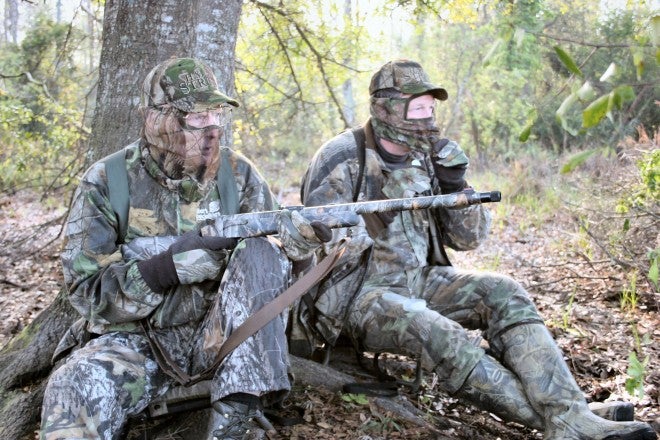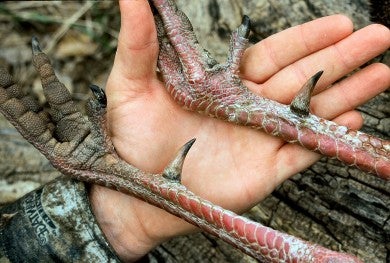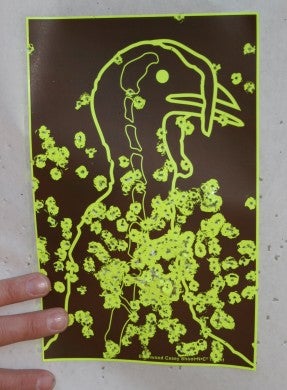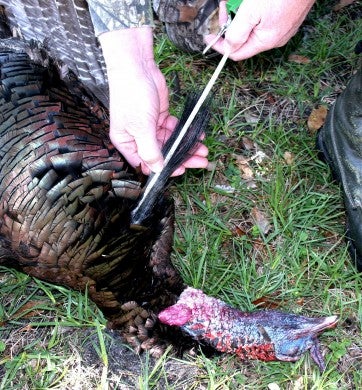Choke Up for Spring Turkey Hunting
Bob McNally 04.20.15

It wasn’t too many years ago that simply having a full-choke tube in your pet turkey gun was about all an average hunter could do to produce a tight pellet pattern.
But all that has changed dramatically with the wealth of “after market” and custom-made choke tubes designed for turkeys (and waterfowl) that have hit the market.
It’s no longer good enough to have a basic interchangeable “full” choke in your pet Remington, Ithaca, Mossberg, Beretta, or Browning. Today you’ve got to have a specialized “turkey” choke that’s fuller than full. Such chokes are sold by many different companies, and while there’s little doubt some are better than others, most produce tighter patterns than that old screw-in “full” choke you got with a pack of tubes when you bought your smoothbore.
Here’s why.
The inside diameter of a standard 12-gauge shotgun barrel is .729 of an inch. A typical full choke reduces the diameter to .695, some chokes as much as .680. But many specialized “after-market” turkey chokes offer full-choke constrictions to as much as .629 inches.
This constriction of steel diameter at the barrel end keeps pellets closer together farther down range. More pellets together produces denser patterns, and instead of hitting a tom in the head and neck with 20 pellets at 30 yards, you’re smacking him with 30 pellets. At 40 yards instead of just a few pellets in the vitals of a big bird, you’ve got a dozen or more.
Tighter chokes equate to better results at longer range, and custom turkey chokes simply do it better because they are more constrictive at the end and are also better designed.
But there is a limit in how constrictive a choke can be without destroying an effective lead shot pattern. If the choke is too tight, or “over-choked,” it deforms standard lead pellets because they squeeze together too tightly as they pass through the constricted or “choked” barrel end. This deforms round lead shot, making it flat on its edges, causing it to plane and fly abnormally.
Deformed pellets tumble and sail more like bottle caps than spheres, so uniform, predictable, “tight” shot patterns are unobtainable. However, with today’s specialized turkey shotshells, hunters can employ “tighter” than usual chokes, with tube diameters as tight as .675 or less. With premium shotshells having pellets of copper-plated shot or special “buffered” loads having pellets surrounded with a shock-absorbing powder, extra-tight turkey chokes do not deform pellets. Much tighter patterns can be attained at longer ranges.
An improvement of 10 or 15 percent pattern density at longer range (40+ yards) is attainable with extra-tight custom chokes using special turkey shotshells.
After-market choke tubes typically are long and specially ported. This allows gas to vent through the choke slots, reducing recoil. It also prevents gases from traveling faster than a shotshell wad and its pellets. Slots or ports in a choke also briefly “grab” a shotshell wad as it passes through, which separates it from pellets just before they leave a barrel. This significantly improves pattern density and efficiency.
“Turkey hunters want chokes that’ll improve pattern performance in the 35 to 50-yard range,” says Linda Powell, formerly with the Remington Arms Company, which offers replacement or after-market chokes for turkey hunting. “They want a more concentrated pattern and less recoil if they can get it from the heavy-load shells they use.”
Other well known “ported” chokes include the “Pattern Master” and the Rhino line of chokes. These chokes not only are ported, but they are also noticeably longer than standard screw-in “full” chokes. At 4-inches, Remington’s extra-full “Ventilator” turkey choke, for example, is exactly twice as long as the company’s standard full choke.
“Our choke sleeve is very long–more than 3-inches–and extremely tight,” says gunsmith Mark Bansner of Adamstown, Pennsylvania, who’s spent over a decade testing turkey chokes, barrels and patterns. “If you have a super-full choke, it must be long.”
But that’s not the end of customizing available in this era of extra-full turkey chokes. Now there’s even specialized “straight-rifling,” which is offered by several manufacturers.
A standard full-choke turkey tube has a glass-smooth interior like a shotgun barrel. But some tubes have shallow grooves cut on the inside for “rifling,” which companies like well-known custom choke maker Briley, in Texas, say produces tighter patterns.
As shot travels down a standard smooth barrel and choke, it can spin slightly, and centrifugal force can break up a pattern. Straight rifling in a choke tube prevents that, says the Briley company.
“Straight rifling eliminates the possibility of the load spinning, and that reduces the number of random, ‘flier’ pellets in the pattern,” explains Briley’s Chuck Webb. “Our ‘Super Turkey’ choke is a black stainless steel model with six ‘straight rifling’ grooves, with a constriction of .665 inches. It produces patterns at least 15 percent better than standard full chokes.”
While tight chokes and sure take-downs of toms at long range are great topics of discussion, hunters should be aware, too, just how tight such chokes are at close range. A choke that delivers a devastating pattern at 40 yards leaves little margin for error at 20 yards. It’s about like shooting a rifle at a turkey at that closer range. A little left, right, up or down and you just missed a “gimme” on a tom called right into your lap.
And after-market or custom chokes aren’t cheap. Many are in the $50 range, and some are pushing $100. That may put such chokes out of the hunting budget of some sportsmen. But next time a long-spur tom is “hung up” out there at 50 yards and just won’t close that distance no matter what you do, think what a custom choke might do to change that tom’s tune.


